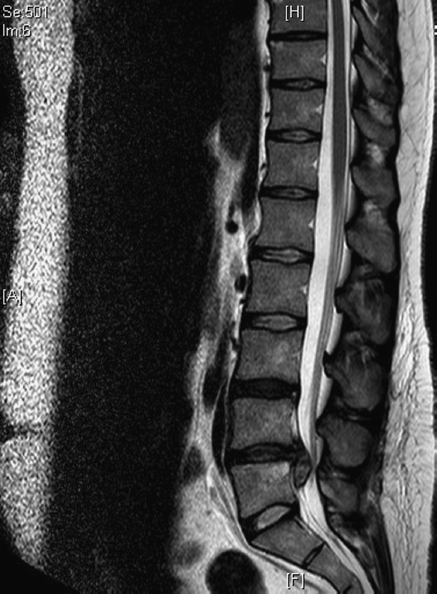Cervical spine: A C6/C7 disc prolapse compressing C7 root may cause diminished triceps reflex; weakness of triceps with sensory symptoms in C7 distribution. A C5/C6 disc impinging upon C6 root may cause diminished biceps reflex with weakness in biceps (forearm flexion) and sensory symptoms in C6 distribution.
Investigations
Lumbosacral spine: Majority with disc herniation improve spontaneously (up to 70% within 4 weeks). In the absence of red flag signs (see below), no imaging tests are required in the first 4 weeks. The recommended tests include standing AP and lateral view of the spine to assess for scoliosis or other spinal deformity and spondylolisthesis (a forward ‘slip’ of one vertebrae on the vertebrae below due to a defect in the pars interarticularis); MRI (currently the test of choice) (Figure 23.1); CT and myelography (when MRI cannot be done). As a guide, obtain imaging when either red flag signs are present (e.g. indicating CES) or symptoms of prolapsed disc severe enough to consider surgery persist beyond 4 weeks. Blood tests (FBC and ESR) should be performed with suspected infection or malignancy.
Figure 23.1 MRI of lumbosacral spine demonstrating disc prolapse at L4/L5 causing cauda equina syndrome.








